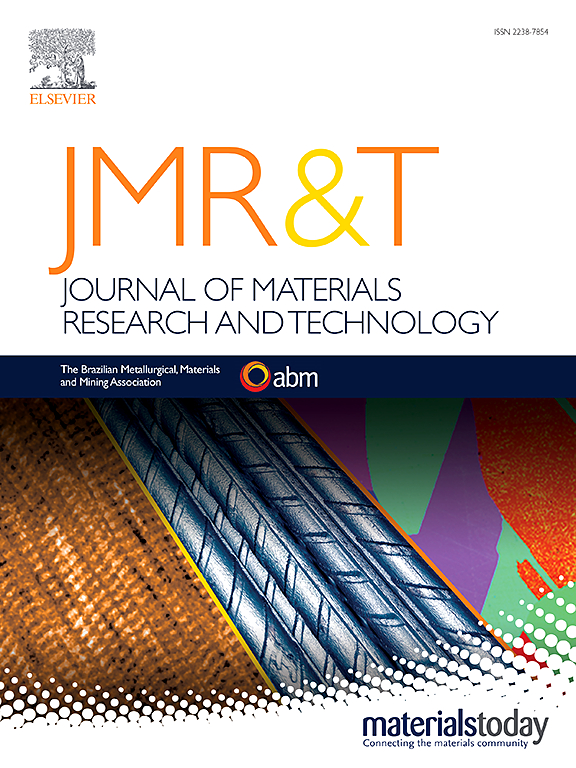Suppression of inner surface roughening during hollow sinking of SUS304 stainless-steel tubes with {111} fiber texture
IF 6.2
2区 材料科学
Q1 MATERIALS SCIENCE, MULTIDISCIPLINARY
Journal of Materials Research and Technology-Jmr&t
Pub Date : 2025-03-08
DOI:10.1016/j.jmrt.2025.03.052
引用次数: 0
Abstract
The surface roughness and Taylor factor of the inner surfaces of the stainless-steel microtubes were evaluated to clarify the mechanism behind the suppression of inner surface roughening during hollow sinking. SUS304 microtubes with an outer diameter of 2.0 mm and a wall thickness of 0.09 mm were drawn without an inner tool. The inner surface roughnesses and crystal orientations of the original and drawn tubes were evaluated. The results indicated that the Taylor factors of the {112}<111> and {110}<111> textures were larger and smaller, respectively, than those of the other textures in the {111} fiber texture during wall-thickening. Therefore, inhomogeneous deformation was more likely to occur during wall-thickening because the Taylor factor was distributed over a wide range. By contrast, all grains in the {111} fiber texture had nearly the same Taylor factor during wall-thinning. Consequently, differences in the Taylor factor among the grains of the {111} fiber texture were smaller during wall-thinning than during wall-thickening. These results indicate that inhomogeneous deformation of the grains was less likely to occur during wall-thinning than during wall-thickening. Consequently, the coefficient of roughening evolution considering the effect of changes in surface area decreased by up to 60% owing to wall-thinning during hollow sinking.
求助全文
约1分钟内获得全文
求助全文
来源期刊

Journal of Materials Research and Technology-Jmr&t
Materials Science-Metals and Alloys
CiteScore
8.80
自引率
9.40%
发文量
1877
审稿时长
35 days
期刊介绍:
The Journal of Materials Research and Technology is a publication of ABM - Brazilian Metallurgical, Materials and Mining Association - and publishes four issues per year also with a free version online (www.jmrt.com.br). The journal provides an international medium for the publication of theoretical and experimental studies related to Metallurgy, Materials and Minerals research and technology. Appropriate submissions to the Journal of Materials Research and Technology should include scientific and/or engineering factors which affect processes and products in the Metallurgy, Materials and Mining areas.
 求助内容:
求助内容: 应助结果提醒方式:
应助结果提醒方式:


